Indian Poultry Sector: At a glance
The Indian poultry Sector has over the years grown exponentially and playing a significant role in contributing to the India’s Gross value added among all the primary sectors. The sector has witnessed a whopping growth in last 10 years at a compounded annualized growth rate (CAGR) of 7.5% with a cumulative revenue of ~ INR 130 billion producing ~ 6+ Million MT of Broiler meet and ~90 billion edible eggs annually.

The Indian poultry sector generates direct and indirect employment to more than 5 million rural and urban Indians, contributing to the 5% of Agriculture GDP. The production efficiencies in the poultry sector have improved significantly over last one decade.
The feed conversion ratio (FCR) in broiler meat production has come down to 1.55-1.6 against 1.8-1.9 a decade ago with an efficiency improvement of ~14%. Similarly, in the layer and breeder sector as well, the hen housed eggs and hen housed hatching eggs has improvised to a great extent. Today a layer bird during her economic life cycle is able to produce 330 edible eggs and a breeder bird lay about 180 egg is her economic lifecycle of 68-70 weeks. The greatness of Indian Poultry sector and its contribution to the nation is known to all within the sector and beyond with the growing traction, growth and developments in the sector.
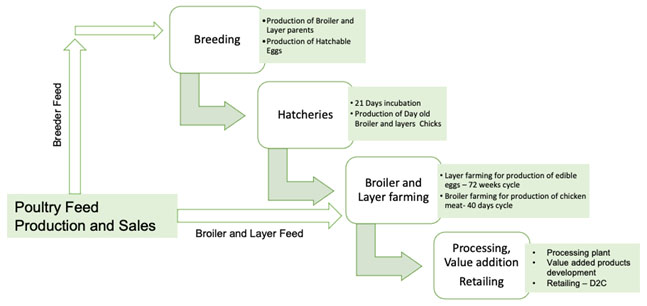
The Perfect competition in Poultry:
In the recent years, the Indian poultry sector has advanced significantly towards brand building and value addition of chicken meat and eggs. However, the fact of the matter is, about 91% of chicken meat and eggs in the market is still being sold through wet market and open wholesale market as a commodity in a perfect competition scenario. Under such circumstances, the price becomes the only differentiations between the products. Therefore, the poultry farmers are most often compelled to fall into trap of competition from fellow producers and sell their produced at a under-price and incur losses in spite of the performance efficiencies.
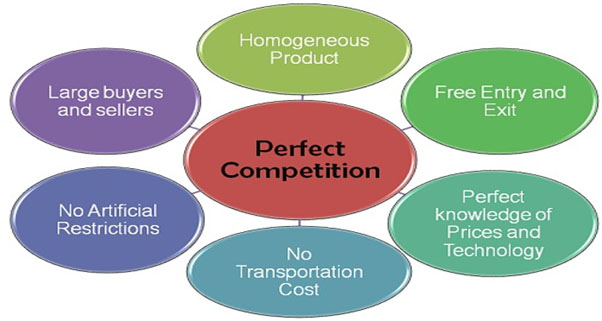
Demand & Supply in Poultry sector:
In this article, an attempt has been made to discuss a few key aspects of demand and supply which applies to the all-range poultry products. Fundamentally, when the demand matches the supply, the price optimises, but in the sectors like poultry wherein the supply and demand data are not available in secondary sources, demand is predicted on the available produced based on a given price.
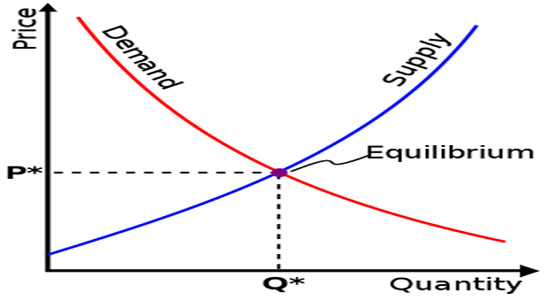
The price above cost of production is a major indicator for demand in perfectly competitive market. If the poultry produce is sold in a price which is higher than the cost of production, the producers consider that to be the optimally available quantity. On the other hand, when the produced goods are sold in a price lesser than or closer to the cost of production, it is considered to be either a lower consumption demand or higher supply level with nominal demand. But the irony is, in the most of the cases, the actual consumption demand is measured through the price being offered by the intermediary buyers which may not be the right reflection of actual willingness to pay by consumers.
Price dynamics and volume of sales is the indicative of demand. A poultry farmer or a producer organisation identifies the demand based on the enquiry being made by customers over the previous period and price is obtained from that. Given the fact that measuring demand without knowing the actual pattern of consumption and supply is highly critical, the article aims at evaluating the fundamental facts which is to be looked at while deciding price of the poultry products.
Below are a few fundamental microeconomic concepts which are highly relevant with poultry sector in this regard.
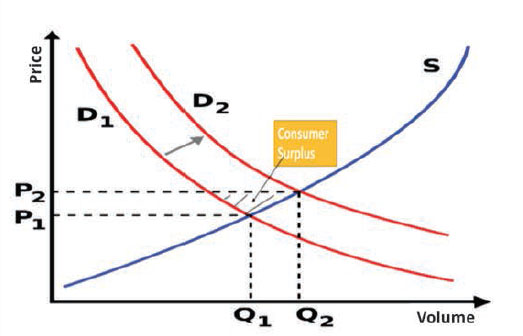
Consumer Surplus:
It is an economic measurement of consumer benefits. A consumer surplus happens when the price that consumers pay for the poultry products is less than the price, they’re willing to pay. It’s a measure of the additional benefit that consumers receive because they’re paying less for something than what they were willing to pay. Lack of market information and desperate sales by the farmers mostly leads to a situation wherein the intermediary buyers gets the consumers benefit due the fact that the producers are not informed enough on the market prevailing price and available volume.
Producer Surplus:
On the other hand, a producer always tries to increase his producer surplus by trying to sell more and more at higher prices. However, it is simply not possible to increase the producer surplus indefinitely since at higher prices there might be very little or no demand for the produced goods. In a given circumstances, it is important for the producers to take an informed decision and identify the optimal production.
Both consumer surplus and the producer surplus occur in poultry sector in most of the time during the year due to the lack of information on supply and demand.
Deadweight Loss:
It is the excess burden created due to loss of benefit to the participants in the transaction which may be individuals as consumers or producers. In the supply chain of poultry produced, it is extremely important to maintain and streamline margins of intermediaries to eliminate the chances of deadweight loss for the consumers or producers.
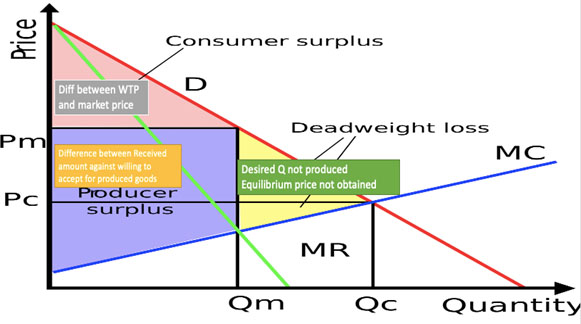
Opportunity Cost:
Opportunity costs represent the potential benefits that a poultry producer misses out on when choosing one alternative over another. Because opportunity costs are unseen by definition, they can easily be overlooked. Understanding the potential missed opportunities when a poultry farmer or a producer company chooses one options over another allows for better decision making.
Demand Measurement: Predictive Demand Vs Actual Demand
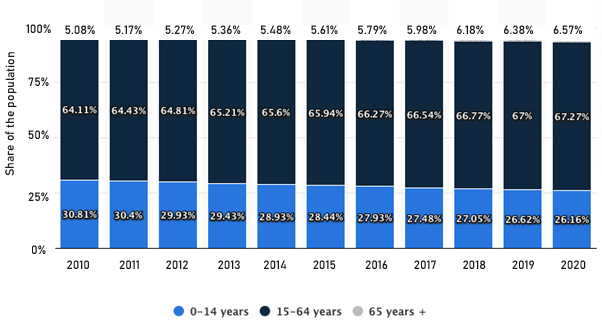
The statistics depicts that the current population of India is at 1.39 billion or 1393.4 million. Out of the total population, 26.16 % of the Indian population fall into the 0–14-year category, 67.27% into the 15-64 age group and 6.57 % are over 65 years of age. According to the to the Indian National Family Health 2015–16 NFHS survey 75% of Indians are not vegetarian, the number is 78% for women and 70% for men. On the other hand, as per the poultry industry data, the per capita availability of chicken meat is ~ 5 Kg and edible egg is at ~65 numbers.
Segmentation of Consumers:
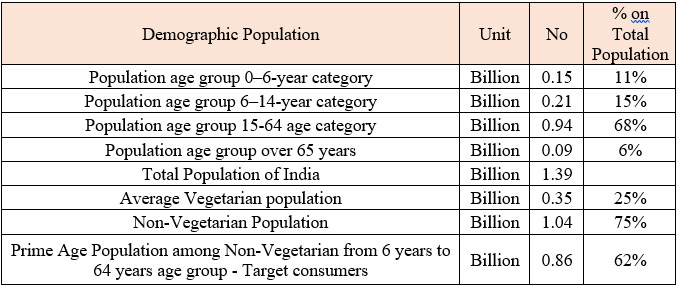
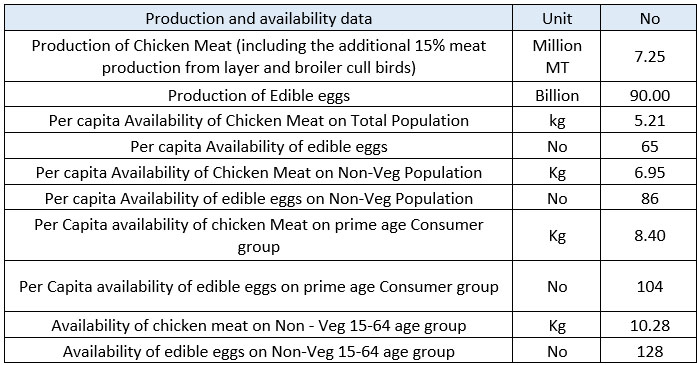
Above table reflects that although the per capita availability of chicken meat and egg is at 5 kg and 65 eggs respectively, but actual availability on target group of consumers is at 10.28 kg and 128 eggs. Moreover 65% of the Indian population are reported to be from rural and purchase power parity is limited. The demand for meat and eggs drop drastically as soon as price goes up beyond a point leading to a surplus supply at the same production level.

Summary:
Price optimization in correlation with supply and demand measurement with the help of information and technology is the key for Indian poultry sector to ensure protect return on investment and benefit the most.
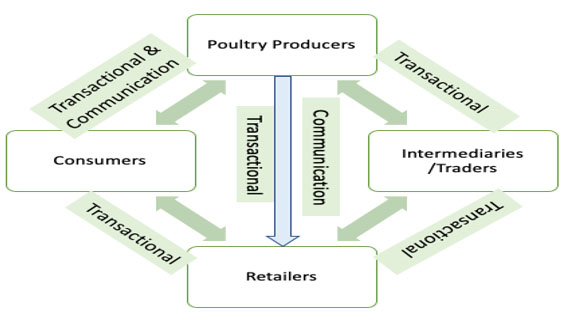
The producer companies are required to consider at business models adding value towards vertical forward integration and reach out to the direct consumers so that the margins are maximised in the value chain which can be in turn passed on to the consumers to boost the consumption at a reasonable price. Establishing communication between the retailers and producers is the need of the hour to measure the actual demand at retail level based on which the dynamics of the price of different poultry products may be determined more efficiently.
Author: Dr. Anjan Goswami
Previous article by author:
Indian Poultry – New Consumer Behaviour Will Transform The Industry’s Future






